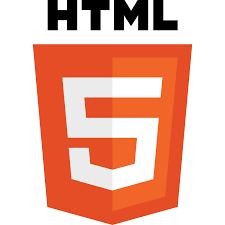

HTML stands for Hyper Text Markup Language. It is the standard markup language used to create web pages. HTML provides a set of tags and attributes that define the structure and content of a webpage. It was created by Tim Berners-Lee and released in 1993.HTML is the language of the web, used by billions of websites to create the pages you see every day. Want to learn HTML from scratch and make your web pages? This tutorial is for you! In this HTML tutorial, you will learn how to use HTML to create and style web pages. You will start with HTML fundamentals, such as basic HTML tags and their attributes, classes, layout, and responsiveness. Then, you will move on to advanced HTML5 topics, such as HTML forms, media, APIs, and more. By the end of this tutorial, you will have a solid foundation in HTML

HTML stands for HyperText Markup Language. It is the standard language used to create and design web pages on the internet. It was introduced by Tim Berners-Lee in 1991 at CERN as a simple markup language. Since then, it has evolved through versions from HTML 2.0 to HTML5 (the latest 2024 version). HTML is a combination of Hypertext and Markup language. Hypertext defines the link between the web pages and Markup language defines the text document within the tag.
Here are some of the key advantages of learning HTML: Web Structure Foundation: HTML provides the fundamental skeleton of every web page. It tells browsers how to display text, images, links, videos, and other elements. Ease of Use: HTML is renowned for its beginner-friendliness. Its straightforward tags and syntax make it a great place to start your web development journey. Gateway to Web Development: Mastering HTML is the first step toward learning more complex web technologies like CSS (for styling) and JavaScript (for interactivity). Diverse Applications: It empowers you to build websites, email templates, newsletters, and much more. Creative Expression: Allows you to bring your ideas to life online, fostering a fun outlet for creativity and design.
Forms in HTML are used to collect input from users. They can include various elements such as text fields, checkboxes, radio buttons, dropdown menus, buttons, and more. In this guide, we'll explore the different form elements and their usage.A form is created using the element. It serves as a container for form controls and defines the boundaries of the form.
What is HTML Tables? An HTML Table is an arrangement of data in rows and columns in tabular format. Tables are useful for various tasks, such as presenting text information and numerical data. A table is a useful tool for quickly and easily finding connections between different types of data. Tables are also used to create databases.
| Firstname | Lastname | Age |
|---|---|---|
| Priya | Sharma | 24 |
| Arun | Singh | 32 |
| Sam | Watson | 41 |
The button tag are two different approach to use Button in HTML document. The difference between them is that the buttons created with the button tag offer many contributing possibilities than input type=”buttonattribute. The button can have content inside it. The button tag permits phrasing content inside button element contents like text or images etc, along work with type functionality defined. But the input type=”button” attribute does not permit content. For example, a button tag that contains an image functions and may resemble an input tag whose type is set to “image”, but the button element type allows content. Both examples below very clearly shows the difference.
The template tag in HTML is used to store the HTML code fragments, which can be cloned and inserted in an HTML document. The content of the tag is hidden from clients being stored on the client-side. It is inserted until activated using JavaScript. Use JavaScript to get the content from a template, and add it to the web page.
The th tag is used to define header cells in a table. It represents the header row or column of the table. Typically, th elements are used within the thead section of the table.
Anchor Tag The anchor tag a is used to create hyperlinks in HTML, allowing users to navigate from one page to another or open external resources. It is typically used within the body of an HTML document